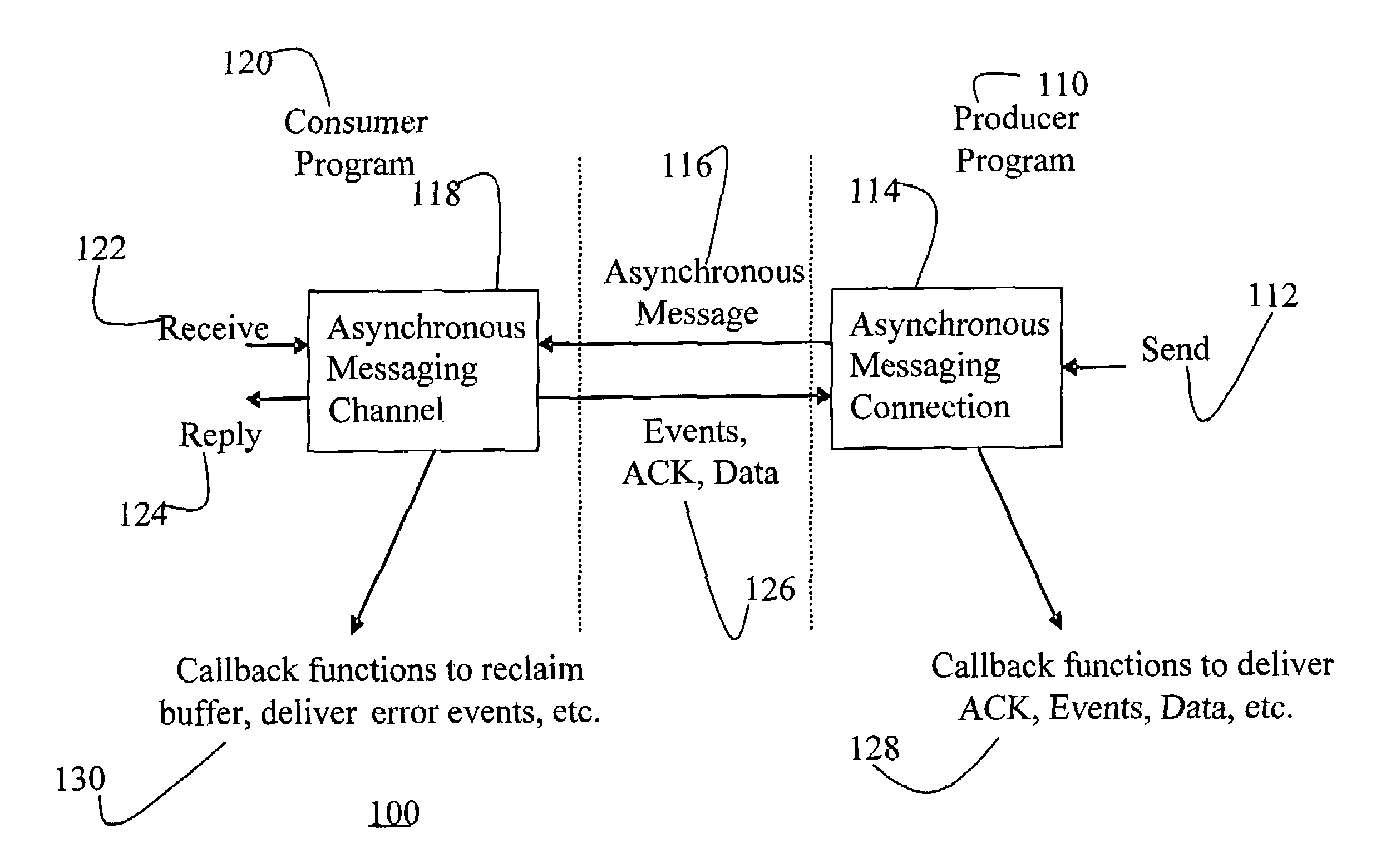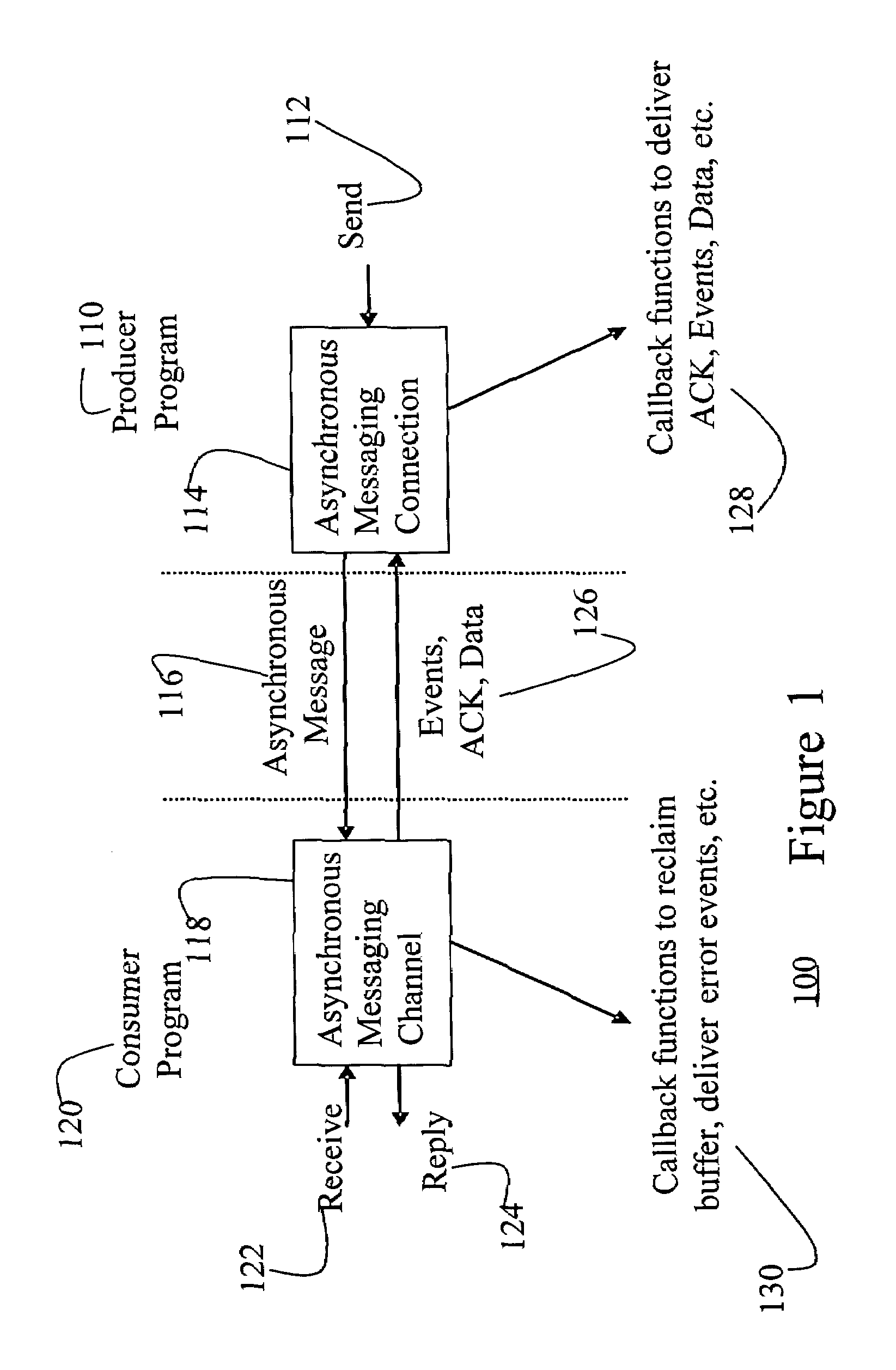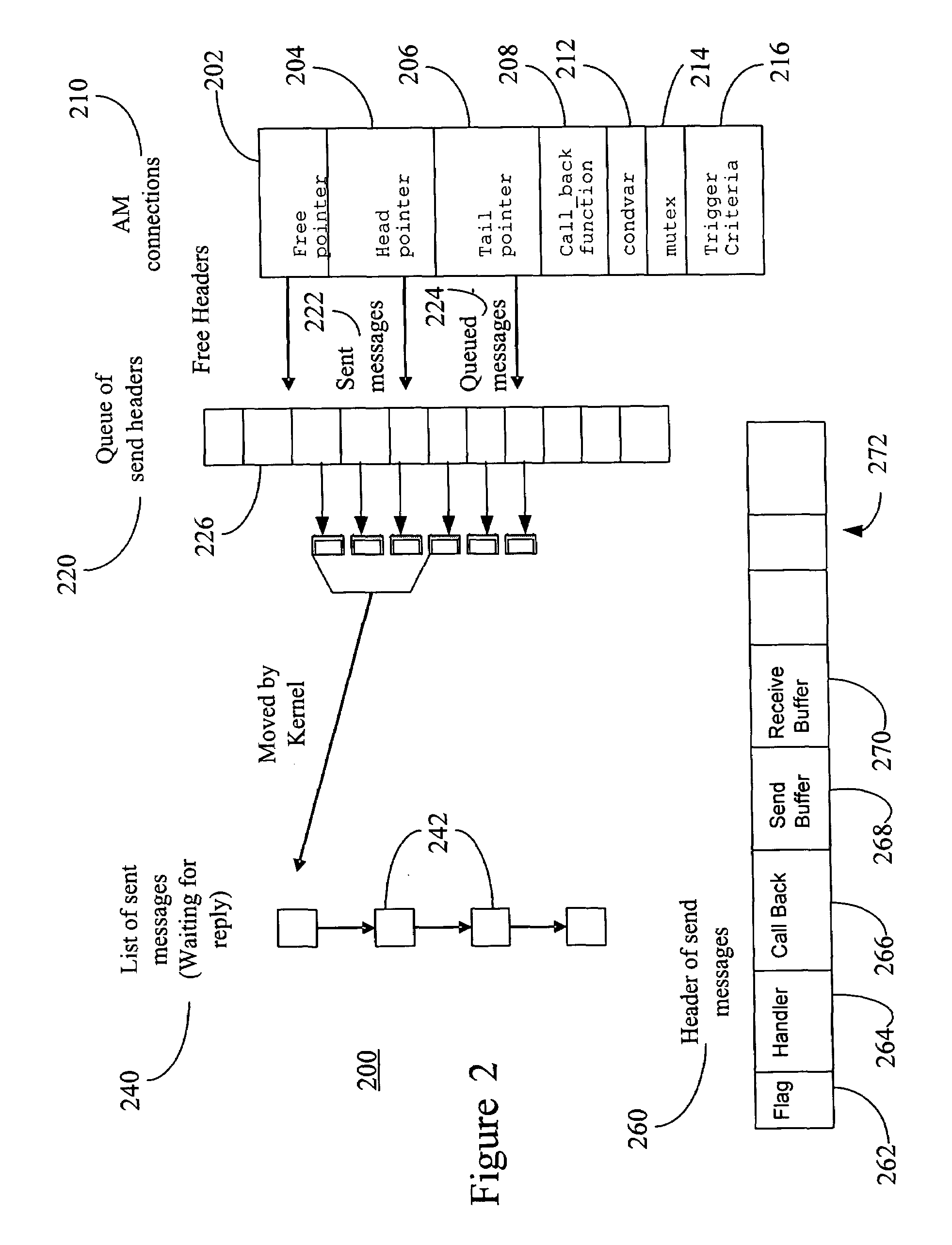Fast and memory protected asynchronous message scheme in a multi-process and multi-thread environment
a message scheme and multi-thread technology, applied in the field of computer operating systems, can solve the problems of limiting the effectiveness of data intensive processing in today's data intensive processing, not providing a high level of data throughput, and still suffering from various performance issues, so as to speed up the queue operation, reduce the overhead of locking, and improve the effect of performan
- Summary
- Abstract
- Description
- Claims
- Application Information
AI Technical Summary
Benefits of technology
Problems solved by technology
Method used
Image
Examples
Embodiment Construction
[0019]The asynchronous message passing methods and systems described may be provided as software programs that are generally stored in an executable form on a computer readable medium such as a random access memory (RAM), read only memory (ROM), optical disk (CD-ROM), or magnetic storage medium (hard drive or portable diskette), or may be implemented by hardware means, or other means known in the art. These functionalities may be provided, for example, as combination of functions of an asynchronous messaging library and extensions to existing synchronous kernel calls of a real time operating system (RTOS). The asynchronous messaging library may include functions for both sending and receiving messages. The functionalities described also may be provided over multiple libraries.
[0020]An exemplary bidirectional communication model 100 for delivering asynchronous messages between programs of an operating system is shown in FIG. 1. The model 100 includes a producer thread 110 that sends ...
PUM
 Login to View More
Login to View More Abstract
Description
Claims
Application Information
 Login to View More
Login to View More - R&D
- Intellectual Property
- Life Sciences
- Materials
- Tech Scout
- Unparalleled Data Quality
- Higher Quality Content
- 60% Fewer Hallucinations
Browse by: Latest US Patents, China's latest patents, Technical Efficacy Thesaurus, Application Domain, Technology Topic, Popular Technical Reports.
© 2025 PatSnap. All rights reserved.Legal|Privacy policy|Modern Slavery Act Transparency Statement|Sitemap|About US| Contact US: help@patsnap.com



